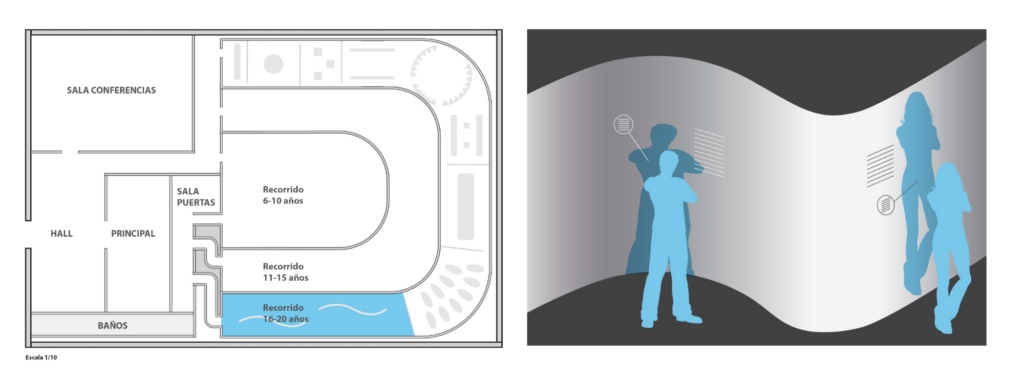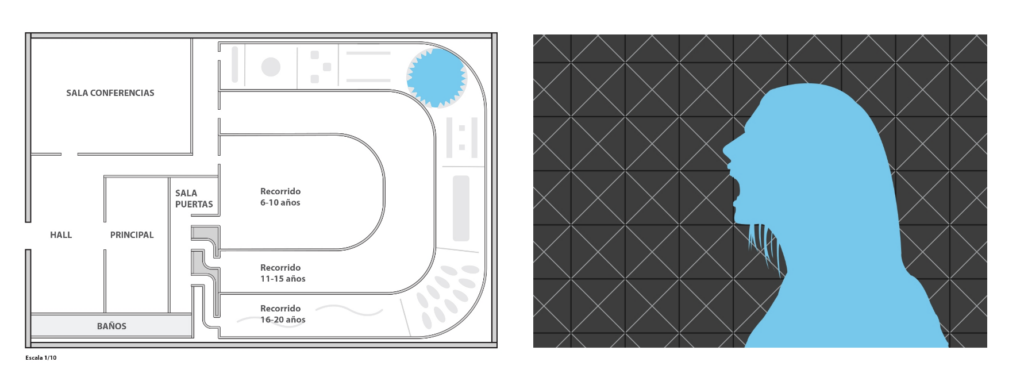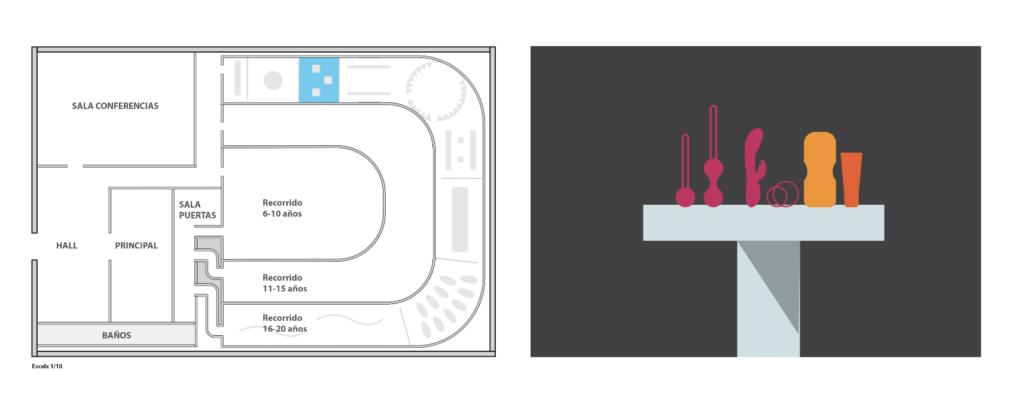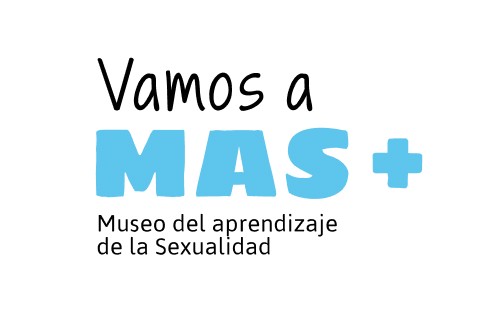By Laura de la Cruz
Published on UxPlanet
April 15, 2020
Our client was the Spanish Ministry of Education (Ministerio de Educación del Gobierno de España).
We received a very well detailed brief on the problem, and from it we created a debrief taking in to account the most important areas of it.
We concluded that the problem was that youngsters were lacking Sexual Education, being too little, too focused on the biological side of it and interrupted.
The objective was to enable a better emotional and affective development for the youth so that they could generate balanced and healthy self-esteem.
The goal was to create a disruptive solution, that would also be a reference to the rest of Europe.
The idea was simple but yet disruptive, a Museum for the Sexual Education (Museo del aprendizaje de la Sexualidad). We thought of making a temporary exhibition that would tour the biggest cities in Spain.
Starting in Madrid our proposal was big, an interactive museum divided by ages. Kids would have to visit with their parents or their consent in case they went with school and each path would be age-appropriate. It would inform on a ludic and proactive way about emotions, body parts, relationships, etc. not only kids but their parents.
We created three different age paths:
- 6 to 10 years old
- 11 to 15 years old
- 16 to 20 years old
We chose to develop one path for the time being 16 to 20 years old one.

3. Room of mirrors
Inspired by the mazes of mirrors one can find at an amusement park, these mirrors are actually interactive. By standing in front of them, the mirrors would deform our vision but also project graphics and facts about the human body, how puberty changes them and also about acceptance. The intention is to make young people feel comfortable with their bodies.

7. Shout room
During our research, we found out that many teenagers feel like they have no one to talk to and keep their frustrations to themselves. For this reason, we created this room where users can shout out and let go of them.

9. Learning with toys
To normalize the use of sexual toys.
10. Catch the condom
A fun way to end the experience.
Reference: https://uxplanet.org/design-thinking-on-sex-education-1f851dd760ea
Comment: This is a project on designing a sex education experience. I think putting sex education in museum is a great way too bring the topic to more audiences and the public. I featured a couple sections that I thought was interesting. I like how they dedicate several sections of the museum towards the emotional and psychological side of teenagers. By putting the “problems” on display, they normalize the “private” matters which I think would encourages people to discuss sex more openly.




